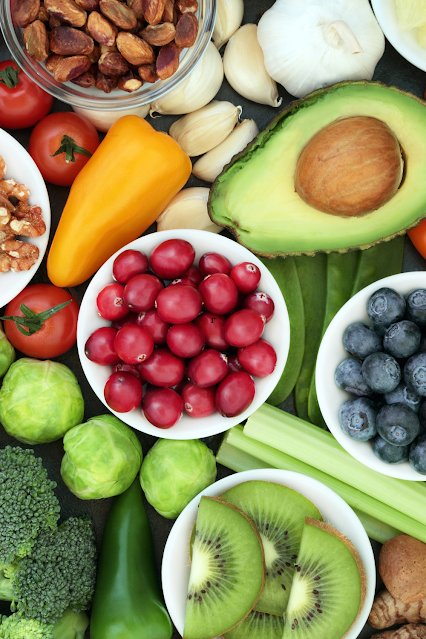Do you endlessly scour restaurant menus for the perfect combination of flavors and textures? Is your mouth watering when you think about perfectly paired dishes? If so, this article is designed just for you. We'll explore the delicate art of food pairing, from understanding different levels of flavor intensity to balancing complex tastes.
You'll develop a deeper appreciation for how cuisine is put together in harmony and learn tips and tricks on creating tasteful combos like a professional chef. Read on to take your culinary skills to new heights – let's get started.
What are the basics of food pairing, and why do it
Food pairing is the exciting art of combining different ingredients to create an extraordinary culinary experience. It opens up a world of flavors, textures, and aromas, taking your taste buds on a delightful journey of discovery. This fascinating practice is based on the science of understanding how different food elements work harmoniously together, unlocking new dimensions of taste and elevating your dining experience to a whole new level.
By meticulously considering the flavor profiles, textures, and aromas of various ingredients, food pairing helps enhance a dish's overall sensory impact, allowing you to enjoy an immersive, multisensory meal that will leave a lasting impression.
So, why not embark on this captivating culinary adventure and let the magic of food pairing transform how you perceive and experience food? For example, this banana nut bread recipe is the perfect example of a successful food pairing – featuring bananas, walnuts, and honey. Each ingredient offers its unique flavor and texture, creating an unforgettable taste experience when combined.
Fundamental rules to remember before you get started with food pairing
Food pairing isn't just about randomly combining ingredients – there is an art to it. Here are some fundamental rules to remember:
The central tenet of food pairing is balance. It means striving for a harmonious balance between ingredients with similar intensity levels, such as light and delicate flavors or bold and intense ones. Texture also plays an essential role in food pairing – this refers to how each ingredient feels when it enters your mouth. Try to create contrast by combining different textures, such as crunchy with smooth or creamy with crisp.
Flavors should complement one another, not compete. Look for complimentary flavor combinations that bring out the best in each other rather than clashing together and canceling out their unique qualities. For example, pork goes well with apple sauce and tomato sauce; garlic is delicious with fish; and chocolate pairs nicely with orange.
Finally, keep in mind the overall impact of your dish. Consider all aspects – color, texture, and presentation – to create a visually appealing and compelling meal.
Combining flavors – different techniques like contrast, harmony, and more
When it comes to food pairing, there are different techniques that you can use to combine flavors. The most common approaches are contrast and harmony. Contrast involves combining ingredients with opposing qualities, such as light and heavy, sweet and savory, or sour and spicy. For example, pairing a light fish dish with a rich tomato sauce creates an exciting flavor contrast – each ingredient enhances the other's unique qualities without overpowering them.
Harmony is when two ingredients share similar qualities or feature complementary flavor profiles. This approach emphasizes the subtle nuances of each ingredient while allowing them to work together in perfect synergy. For instance, creamy peanut butter pairs beautifully with bananas or apples; smoked salmon works harmoniously with cream cheese, and basil and tomatoes make a classic combination.
In addition to contrast and harmony, you can also try the techniques of juxtaposition or bracing. Juxtaposition involves contrasting two ingredients usually associated with each other, such as pairing red wine with fish. Bracing is when you combine two ingredients with an intense flavor to tame them, like adding a pinch of sugar to tart berries.
Exploring texture combinations for an exciting dining experience
It's not just flavored that you need to consider when food pairing – texture also plays an important role. By exploring different textures, you can create exciting and unexpected taste combinations. For instance, combining crunchy vegetables with creamy sauces or pairing chewy beef with crispy carrots provides a delightful contrast in texture and enhances the overall dining experience.
You can also use this technique to enhance flavors – try adding crunchy elements such as nuts or seeds for an extra layer of flavor, or incorporate something soft like mashed potatoes for added creaminess. The texture should also be considered when selecting garnishes – for example, opting for crispy bacon over a soft-boiled egg will add a pleasingly crunchy element to your dish.
Simple food pairings experiments to try out in your kitchen
Exploring food pairings can be fun and rewarding. To get started, try out some simple experiments in your kitchen. For example, list ingredients you usually use together, such as garlic and onion or tomato sauce and pasta. Then try experimenting with different flavors – substitute the garlic for ginger or swap the tomato sauce for pesto – to discover new flavor combinations.
You can also look up classic recipes from different cuisines and experiment with the ingredients they call for. Why not create your dish by combining complementary flavors? Start with a main ingredient like beef or fish, and then add complementary elements like herbs, spices, vegetables, sauces, and garnishes to complete the meal.







